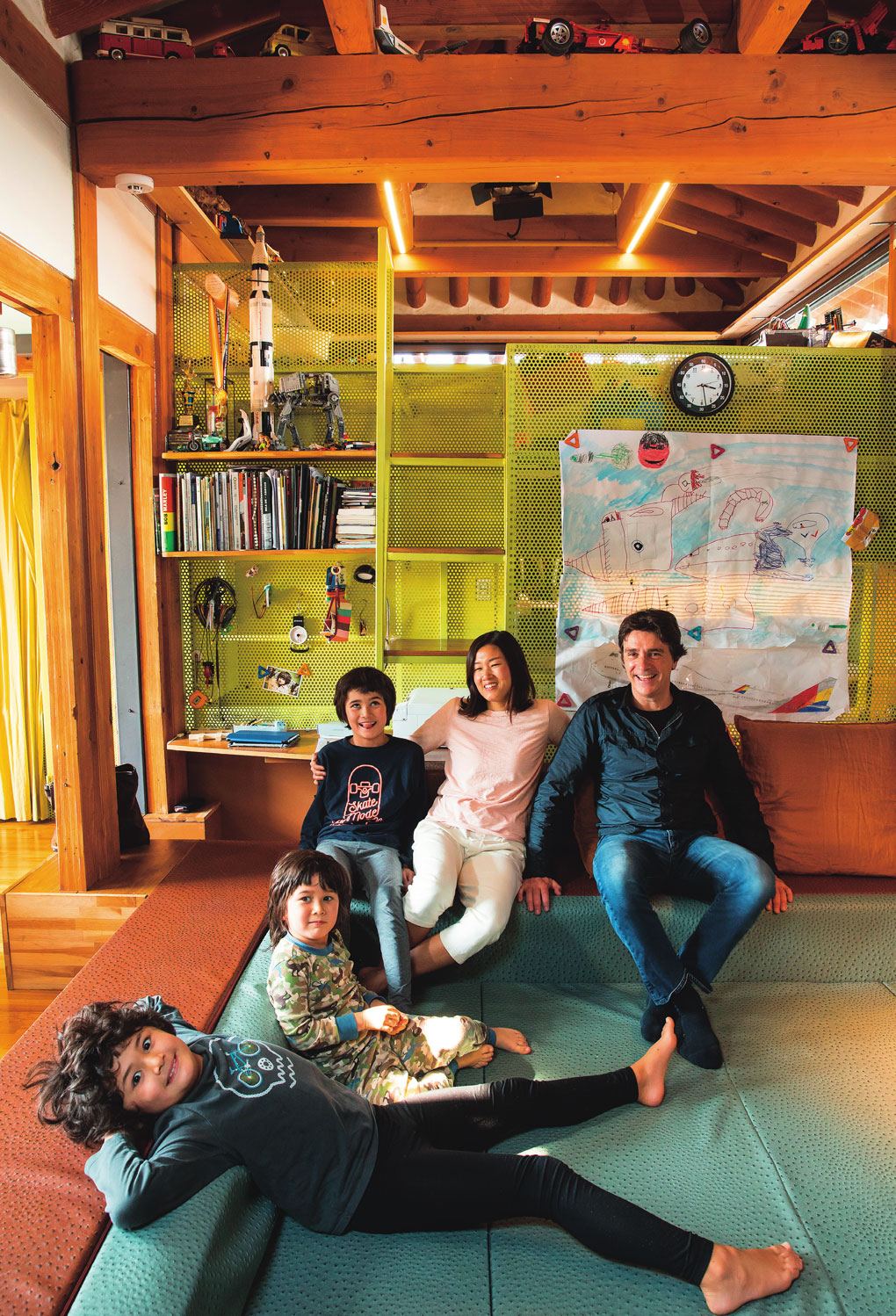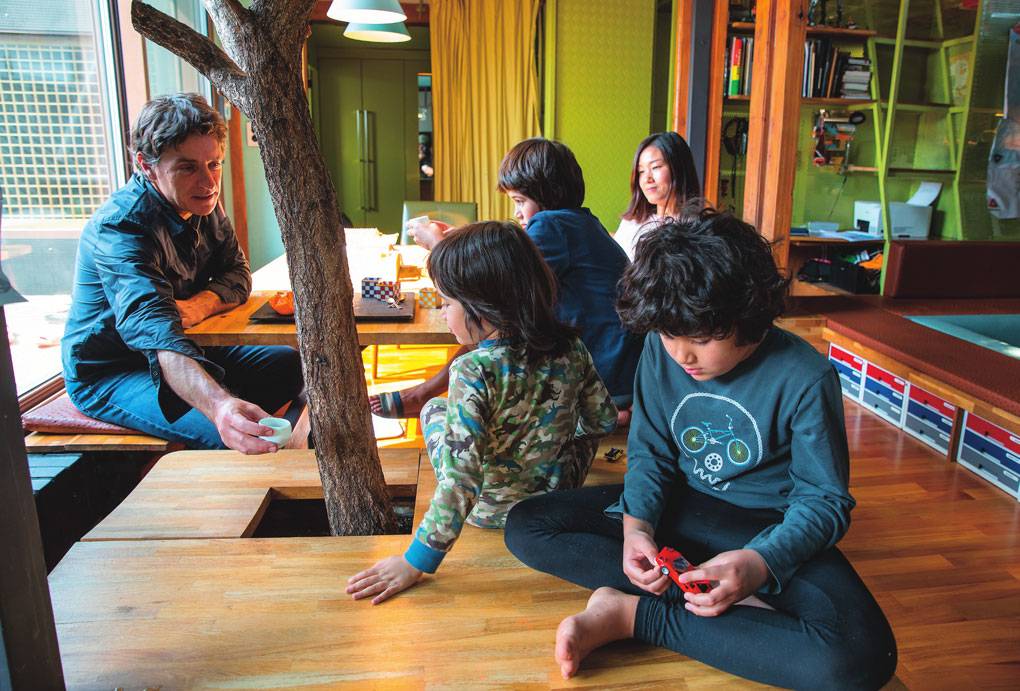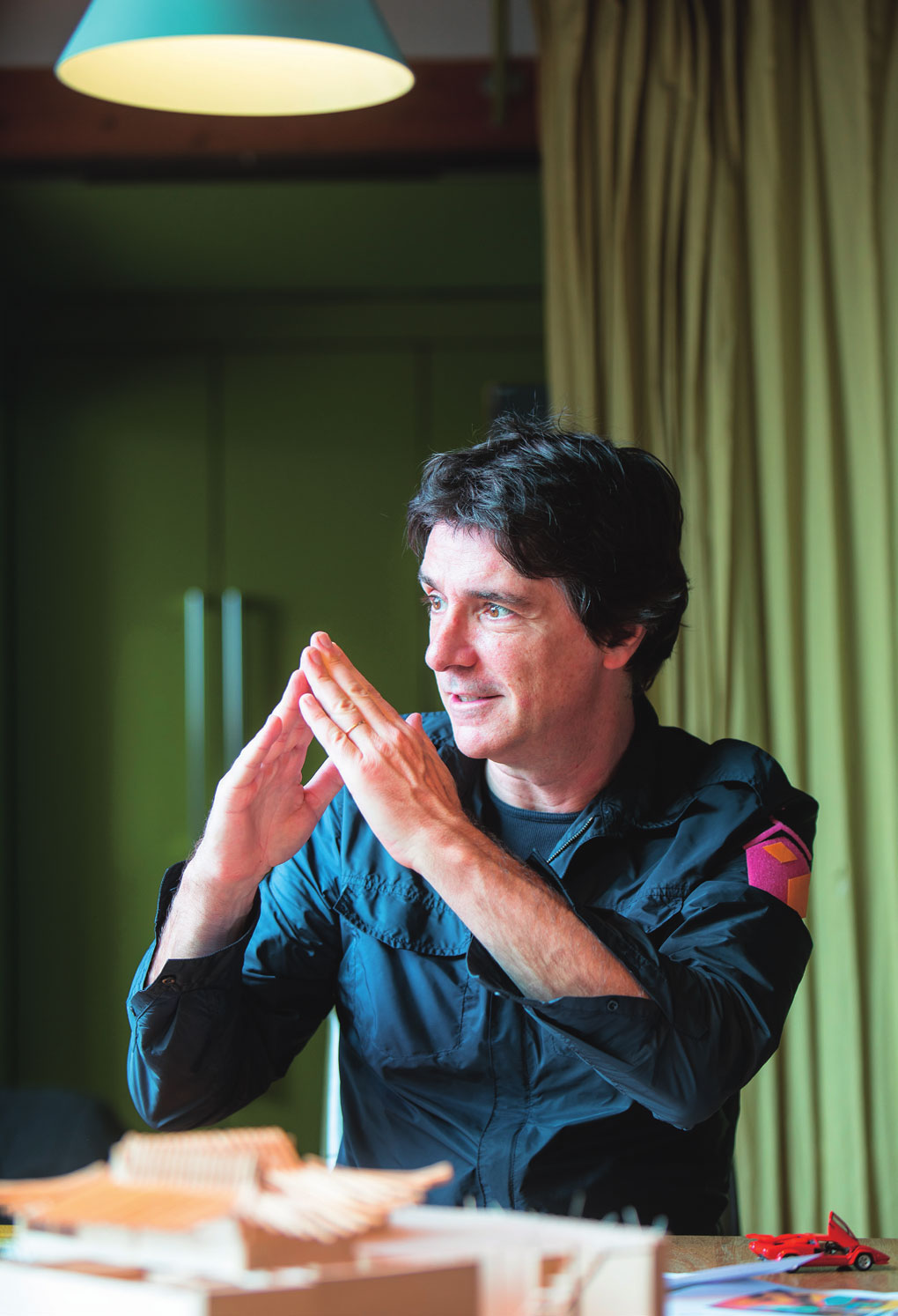A “resident alien” of almost 20 years, Italian architect Simone Carena is constantly inspired by the fast pace of life in Korea. Relishing the possibilities of a country that he believes is emerging as a lab for future cities, he happily offers hybrid solutions for his personal and professional spaces.
You could say the journey started with Bob Marley. As an architecture student at Polytechnic University in his hometown of Turin, Italy, Simone Carena d his own exchange program. Destination: Jamaica, home of the late legendary reggae singer.
“I’ve had a big passion for Bob Marley since I was a kid,” explains Carena. “I was 11 years old when my uncle told me, ‘You will hate this guy when you grow up. It’s just pop music.’ But I said, ‘No. I will go to Jamaica and meet the family and learn about this [music].’”
While studying on a scholarship at the Caribbean School of Architecture at Jamaica’s University of Technology, Carena did indeed meet Bob Marley’s wife and children. He also learned about dub, a genre of electronic music rooted in reggae. “It’s taking a base and adding your own sounds. In architecture, this means maintaining the structure and adding new elements,” says Carena. This approach courses through his work as an architect – and his life choices in Korea. It is exemplified by his home, a remodeled traditional tiled-roof house, or hanok, sitting atop the hills of the Bukchon neighborhood of Seoul.

Looking for a place to live after marrying, Italian architect Simone Carena fell in love with a hanok in Bukchon, Seoul. A year of remodeling turned the old traditional house into a contemporary home, where he lives with his wife and three sons.
Hybrid Home
Bukchon, found in the old center of Seoul, is an enclave of hanok houses dating back to Joseon, the last Korean monarchy. The windows and doors of these one-story homes are typically made with wood and mulberry paper. Carena’s home was far from move-in ready when he purchased it. “The wood was in bad condition. It was a poor house from the beginning. That’s why we could afford to buy it,” Carena recalls, laughing. That was in 2006.
Many preservation restrictions apply to any restoration in Bukchon. For example, it was illegal to install glass windows and doors back then, though it is allowed now. Carena didn’t feel overwhelmed, however. Coming from Italy, with its rich architectural heritage, much of his education and work had focused on restoration.
Today, the resulting “Hanok Dub” is both old and new – the precious old hanok enveloped inside of what is essentially a contemporary home. Originally facing south, the house was reoriented to the west, toward Italy, with views of Gyeongbok Palace and the presidential office, Cheong Wa Dae, lying in between. At the center of the house is the “Living Pool,” an open space for play and relaxation by day and a bedroom by night. The kitchen and other interior spaces are colored green, which seems to make the house glow in a way that somehow is evocative of 1980s electronic music and warm and beautiful at the same time. Downstairs is a room with a window in the ceiling-cum-terrace floor. Carena’s wife, Shin Ji-hye, a fashion designer, can look up and see her three young sons playing above. She grew up in a hanok and has happy memories of playing in the yard where a rose tree grew.
Over the years, the boys have grown and the terrace has been incorporated into the house. The apricot tree that was planted there has come inside and now stands by the dining table, like the sixth member of the family, its top passing through the roof. Carena is the first to acknowledge that his home is not a pure hanok renovation. “It is a mixed style. We are a mixed family. So it’s going to be a mixed result,” he says.
This is all part of the “living experiment” that constitutes life in the house. “I chose to be here because I was curious about Korean architecture, because the scale of the house makes it feel like our house, our land. I love the neighborhood, but I must say that with tourism it could become unbearable,” he says. As for the interim results of his experiment: “It’s going in the right direction. I’m very happy with the quality of life and the roots that my children are putting down. On the other hand, there is the economic system, which is an enemy.”
In Bukchon, many of the old houses have been renovated as shops, galleries and cafés rather than homes, and the neighborhood itself is surrounded by commercial areas. This translates to a lack of education infrastructure and services for families, including the hagwon (private cram schools), music teachers and swimming pools that are often part of large apartment complexes. Carena worries that his children are making sacrifices because of his choices.
But still, he dreams for the future of Bukchon. Building upwards is not allowed, but interestingly, there are no regulations against going down. “I would love to go down 20 floors. To build a nuclear safety zone, a new city underground,” he says with a smile.

Tomore space for the children, the house was extended to bring the terrace indoors. The apricot tree that grew outside now lives inside with the family like its sixth member.
Led by Passion
When Carena comments, “My life is about passion that leads me to something,” you wonder what brought him to Korea in the first place. His education was international, including a Master of Architecture from the Polytechnic University of Turin, an exchange program at Oxford University and the Harvard Graduate School of Design summer school, as well as a second master’s degree from the Southern California Institute of Architecture. And, of course, there was Jamaica.
As with Jamaica, it was actually music that led Carena to Korea. His office in Turin was located in a century-old, family-operated brick factory. One day, a band came to shoot a music video there, and this led him to the production of a music video for the deaf. On a presentation tour of the video around Asia, including Korea, he met the dean of Hongik University’s International Design School for Advanced Studies and was asked to teach there. Carena arrived in 2001 and has been at the university ever since.
He also met his future wife just before she went to Japan and then Italy to study fashion. After their transcontinental courtship, the couple chose Korea to begin their married life. The reason: “We had a lot more architecture projects here than in Italy. I’m very happy to live here because I see the growth options.”
As a speed fiend who rides a motorcycle and loves Lamborghinis, Carena says, “The speed of transformation in Korea makes it always very exciting.” Therefore, Carena and his business partner, Marco Bruno, established MOTOElastico, with an office in Gwangjang Market, one of the oldest traditional street markets in Seoul.
Elaborating on his decision to stay, Carena says, “I think Korea is a lab that the world is watching to understand the impact of technology – how contemporary architecture and the reinvention of traditional architecture play a part in its identity,” adding that, “The digital city is much more accepted and prevalent here. People understand the advantages. In Italy, people are afraid of being spied on or commercially exploited.”
Seeing the boys happily tumble around their Living Pool, it’s nice to think of them putting their roots down further, growing with the apricot tree, while their parents dream of building upwards or digging down into the ground.
Work Inspirations

Thanks to its rapid technological development and digital transformation, Carena believes that Korea is becoming an experimental laboratory for future cities.
MOTOElastico’s projects have been described as landmarks that swing between Korean know-how and Italian why-not to produce works of “super local culture.” The firm is involved in architecture, interior design, installations, exhibition design, public design, performances, and sometimes a mixture of these. Besides the Hanok Dub, the company’s high-profile works include High Street Italia, a building in Seoul’s trendy Garosu-gil neighborhood that pays tribute to Roman aqueducts and showcases Italy and Italian products, and Citizens’ Hall (Simincheong) in Seoul City Hall, where color codes identify the purpose of each zone in the open-space basement.
“Designing a public space is similar to creating a set for a play, and you have to imagine what kind of comedy or tragedy takes place there,” Carena says. And he also believes that every activity, like a play, should be entertaining in its own way. Many of his projects are fun and play with words. Tank Bang, for example, is a portable “room” made of people walking in room-shaped formation, carrying police shields that serve as the walls. The shields are pink and bear the word “Felice,” a play on “Police.” “Felice” is the Italian word for “happy” and also the name of Carena’s first son. His second and third sons are named Forte and Fermo.
Bang, the Korean word for “room,” pops up in several MOTOElastico projects. “We like the bang. You have your noraebang [literally “singing room”], your PC bang, a bang for every activity of the house, that is now rentable somewhere else. This shows the practical mind of the Korean people,” Carena says. A project he would like to initiate in Bukchon is a jjimjilbang, a Korean-style public bath and dry sauna, which he hopes would start a kind of dialogue on the hanok renaissance. “It’s something that the locals and tourists could share,” he says.
Back and Forth
Carena describes his beloved motorcycle as “a moving bang that is neither interior nor exterior but a combination.” Aside from motorcycle, “moto” means motion. “It’s a dynamic point of view, a vibrant approach to the city,” he says. Moto is also about moving away from a place and then returning. His family travels back and forth between Italy and Korea. In 2017, Carena was awarded a knighthood by the Italian government for his contribution to Italy-Korea relations. The future may hold opportunities for his family outside Korea, but he says, “We’d come back. Korea is a great place to return to.”
Seeing the boys happily tumble around their Living Pool, it’s nice to think of them putting their roots down further, growing with the apricot tree, while their parents dream of building upwards or digging down into the ground.